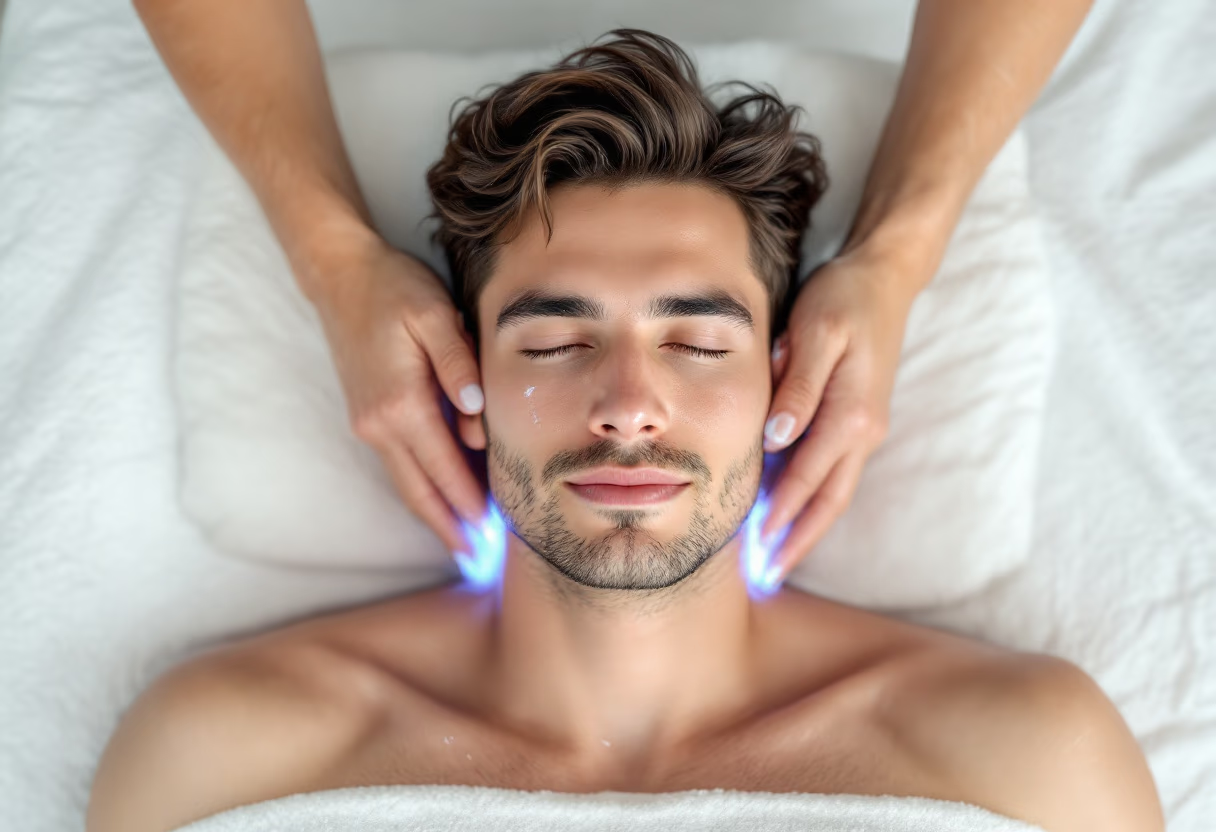
20 Years of Producing the Highest Quality, Most Reliable, and Effective LED mask.
Explore infrared light therapy as an innovative treatment for chronic nonspecific back pain. Learn about photobiomodulation mechanisms, clinical evidence, multimodal treatment approaches, and how IR therapy addresses both pain and psychological comorbidities.

Modern pain science views CNBP as a biopsychosocial phenomenon in which biological, psychological, and social factors interact to sustain the pain experience. This perspective has shifted treatment from purely mechanical fixes toward comprehensive, multimodal strategies.
Psychological Comorbidities:
Neurobiological Mechanisms: The shift from acute to chronic pain involves central neuroplastic changes—sensitization of pain pathways, altered neurotransmitter balance, and structural/functional brain changes—that can perpetuate pain after tissue healing.
Infrared light therapy uses photobiomodulation to target several pathophysiological processes underlying CNBP. Rather than blocking a single pathway, it may modulate interconnected systems involved in chronic pain.
Mitochondrial Enhancement: Infrared light (700–1 000 nm) is absorbed by cytochrome c oxidase, potentially:
Vascular and Circulation Effects:
Endorphin and Neurotransmitter Modulation: IR therapy may influence endogenous pain-control systems by:
Further reading: PubMed search on photobiomodulation | PMC articles on chronic low-back pain
Melatonin and Circadian Rhythm Regulation: The light-dark cycle significantly affects pain perception through melatonin-mediated pathways:
Recent research shows considerable overlap between pain and mood-disorder pathways, which may explain why psychological comorbidities are common in CNBP:
Common Brain Regions:
Neurotransmitter Systems:
Infrared light therapy has shown promise in easing mood disorders through several mechanisms:
Seasonal Affective Disorder (SAD) Mechanisms:
Neuroplasticity Enhancement:
Current research and clinical experience suggest the following IR therapy protocols for CNBP:
Light Characteristics:
Further reading:
Treatment Schedule:
CNBP benefits from a comprehensive approach that addresses all contributing factors:
Physical Component:
Psychological Component:
Social Component:
Not all CNBP patients respond equally to IR therapy. Emerging research suggests several phenotypes that may predict response:
Responder Characteristics:
Treatment Modifications:
IR therapy shows a favorable safety profile with minimal adverse effects:
Potential Side Effects:
This information is educational and not a substitute for professional medical advice.
PubMed search on infrared therapy for pain PMC overview of low-level light therapy
Contraindications:
While promising, the evidence base for IR therapy in CNBP still needs to grow:
Existing Evidence:
Research Gaps:
Mechanistic Studies:
Clinical Applications:
CNBP imposes substantial healthcare costs through:
IR therapy may offer cost advantages:
Primary Care Applications:
PubMed search: infrared therapy chronic pain PMC overview: photobiomodulation mechanisms
Specialist Care Coordination:
Comprehensive Evaluation:
Week 1–2: Intensive Phase
Week 3–6: Stabilization Phase
Week 7+: Maintenance Phase
Objective Measures:
Subjective Indicators:
PubMed research database · U.S. FDA guidance · Mayo Clinic patient resources
Infrared light therapy is a promising, evidence-based option for chronic nonspecific back pain that addresses the condition’s biopsychosocial complexity. By acting on several pathophysiological pathways at once, it may offer advantages over single-modality treatments.
Key Clinical Takeaways:
As evidence grows, IR therapy could become a valuable part of chronic nonspecific back-pain care, potentially helping patients who have not responded to standard treatments and adding a low-risk option to clinicians’ toolkits.
PubMed search NHS back pain overview
Further reading:
